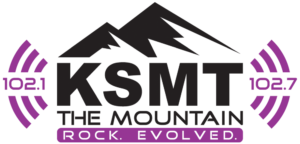Summit County’s commissioners have once again declared January “Radon Action Month,” spotlighting the dangers of the silent, toxic gas lurking in some Colorado homes. The annual campaign reminds homeowners to get their homes tested for radon during the winter, when radon danger is at its highest.
Radon is a carcinogenic, naturally occurring radioactive gas that emanates from soil as radioactive metals decay underground. Radon is especially prevalent in Colorado due to the uniquely uranium-rich geology in the state. In mountain communities like Summit, the danger is even higher due to the presence of many heavy metals in the earth.
The Environmental Protection Agency suggests radon mitigation measures for homes and businesses if radon is detected at levels of 4.0 or more picocuries (a unit of radioactivity) per liter. The average radon level in homes nationwide is 1.3 pCi/L, while the average radon level in Colorado homes is 10 pCi/L. The county says that’s the lung cancer risk equivalent of a non-smoker smoking a pack of cigarettes a day. It is estimated that radon is the cause of at least 21,000 deaths across the country each year.
“Radon is the leading cause of lung cancer among non-smokers, according to EPA estimates,” Summit County Commissioner Karn Stiegelmeier said in a press release. “Overall, radon is the second-leading cause of lung cancer in the United States. And because of the high radon levels we see in Summit County, every home in our community should be tested.”
While county and town building codes require radon mitigation in new construction, older buildings that were grandfathered from current code do not usually have radon mitigation built in.
Without mitigation, radon can easily enter homes through the foundation, gaps around piping and other spaces around a home. During the winter months, when doors and windows tend to stay closed, the gas can get trapped in dangerously high concentrations. Ironically, that means there’s actually a benefit from living in a poorly weatherized or insulated home.
Recommended Stories For You
“An old cabin that’s very drafty is less of a problem, since radon can escape,” said Summit County environmental health manager Dan Hendershott. “The tighter a house is constructed and insulated, the more entrapment.”
Fortunately for Summit County homeowners, the county has a program that offers free radon testing kits to residents to check how they’re doing on radon levels. A similar statewide program handed out 6,000 kits to Colorado residents within a day before running out of free kits.
There are different kits for short-term and long-term testing, with the short-term test lasting three to seven days and the long-term kit checking for radon over the course of three months to a year. While the latter will be more accurate about radon levels over time, either one can tell if there is a dangerous level of radon in the home.
The short-term test kits are about the size and shape of a postcard. The device should be hung in the lowest level of the home that’s used on a regular basis, within the normal breathing zone — 2 to 6 feet from the floor. Once the test period ends, the device is mailed to a laboratory in the enclosed pre-addressed, postage-paid envelope. Test results can be retrieved online. If previous tests have not been performed properly, Summit County Environmental Health recommends retesting.
For more information on radon, including how to obtain a free radon test kit or finding a certified mitigation contractor, visit http://www.SummitCountyCO.gov/Radon. You can also stop by the environmental health department office at the County Commons in Frisco at 37 Peak One Drive. Free kits from the county are available while supplies last, and only available to Summit residents.
